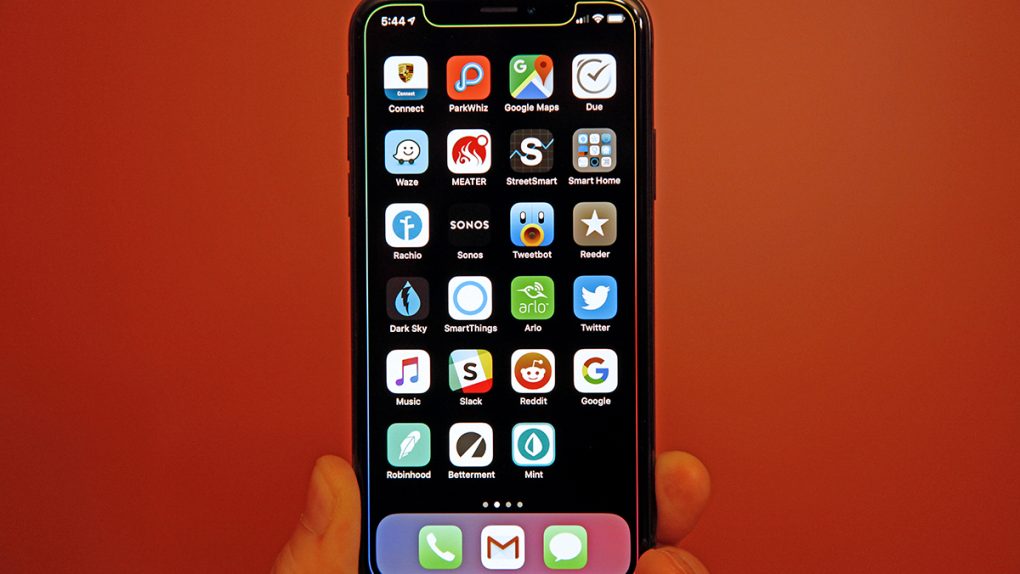The iPhone X notch that Apple introduced in late 2017 is a compromise between gorgeous design and sophisticated functionality. Apple wanted to make an all-screen iPhone for years, but it waited for technology to catch up with its dreams. But the iPhone maker couldn’t create a phone with a screen that occupies the entire front of a phone in 2017. The notch had to exist, to house all those smartphone features that can’t be relocated or killed, including the new Face ID facial recognition system that had no rivals over on Android. Apple kept in place the iPhone X design last year, and it’s expected to do the same thing in 2019. But the tech Apple needs to kill the notch is already here, and 2020 may bring us the iPhone of our dreams.
There’s no question the iPhone X design was a hit, in spite of the notch. Every smartphone vendor in the world, including well-known brands like LG, Google, Huawei, Xiaomi, and OnePlus, copied it. Samsung, surprisingly, stayed away of the notch, even though the Korean company has been following Apple’s moves for years. But very few copycats featured the same 3D face recognition system as the iPhone X. And Android phones with notches at the top still featured a thicker bezel at the bottom.
After the first wave of iPhone X clones last year, we saw an increasing number of alternative all-screen designs from various Android vendors, all looking to kill the notch. Phones with camera-sliding mechanisms appeared, as well as handsets that featured two screens, one on the back and one on the front. In both cases, smartphone makers wanted to remove the selfie cam from the front side, to eliminate the need for notches. These aren’t perfect designs, however, as they come with various compromises of their own.
When Apple does ditch the notch, we don’t expect it to create a sliding mechanism for the camera or place a second screen on the back of the phone. Instead, all the elements in the notch will likely go under the screen. Here’s a look at what’s inside the notch of an iPhone X (XS and XR models have the same components).

Everything in there must go under the screen so that Apple can create the all-screen iPhone we want. That includes the front-speaker, the selfie camera, as well as the many components that allow the TrueDepth camera to deliver its Face ID functionality.
Up until earlier this week, we already knew that Samsung developed a sound-on-display screen that would eliminate the need for a speaker. Samsung supplies a large number of displays for the iPhone X phones, and it would likely make screens with built-in sound if Apple wanted it.
The camera seems trickier, but companies are already looking at ways of placing it under screens. A leaker did say that the technology might not be ready until 2020. The first step is already here: phones with camera holes. The first devices were launched in December, but it’s Samsung’s Galaxy S10 that will make Infinity-O screen popular. However, the new Galaxy S10 phones aren’t likely to feature 3D face recognition like the iPhone X. And that’s the kind of technology Apple will likely not want to ditch from iPhone and iPad.
It’s a recent development that makes me think Apple may have soon have access to all the components that would make an all-screen iPhone possible. A company who’s believed to supply TrueDepth camera parts for Apple’s iPhone X phones unveiled earlier this week components that would allow Apple and anyone else to place all the Face ID sensors behind an OLED screen. That’s the kind of technology that would let Apple significantly shrink the notch. Pair it with sound-on-display screens and in-display cameras, and the notch vanishes.
But no company, especially Apple, will place any of these components under a phone’s display unless the new tech works just as good as the components it’s replacing. The FaceTime and TrueDepth front cameras should deliver the same performance and speed once they’re covered with an OLED screen.
One other thing to note is that in-display fingerprint sensor tech has dramatically evolved in the past year, with Samsung expected to use a sophisticated ultrasound sensor on the premium Galaxy S10 phones. In theory, Apple could always make use of such new tech to place Touch ID sensors under the screen of a future iPhone. Thus, Face ID wouldn’t be a necessity on the iPhone. However, it seems unlikely for Apple to remove Face ID support from the iPhone and return to Touch ID when it favors the former. The 2018 iPad Pro also comes with Face ID support, and the tech may be used on other Apple devices in the future.
That said, Apple does have many patents that describe technology to help it manufacture all-screen iPhones, including tech for drilling holes through the screen, as well as placing cameras and fingerprint sensors under it, which reveal Apple has been researching ways to deliver the iPhone of our dreams for many years.








